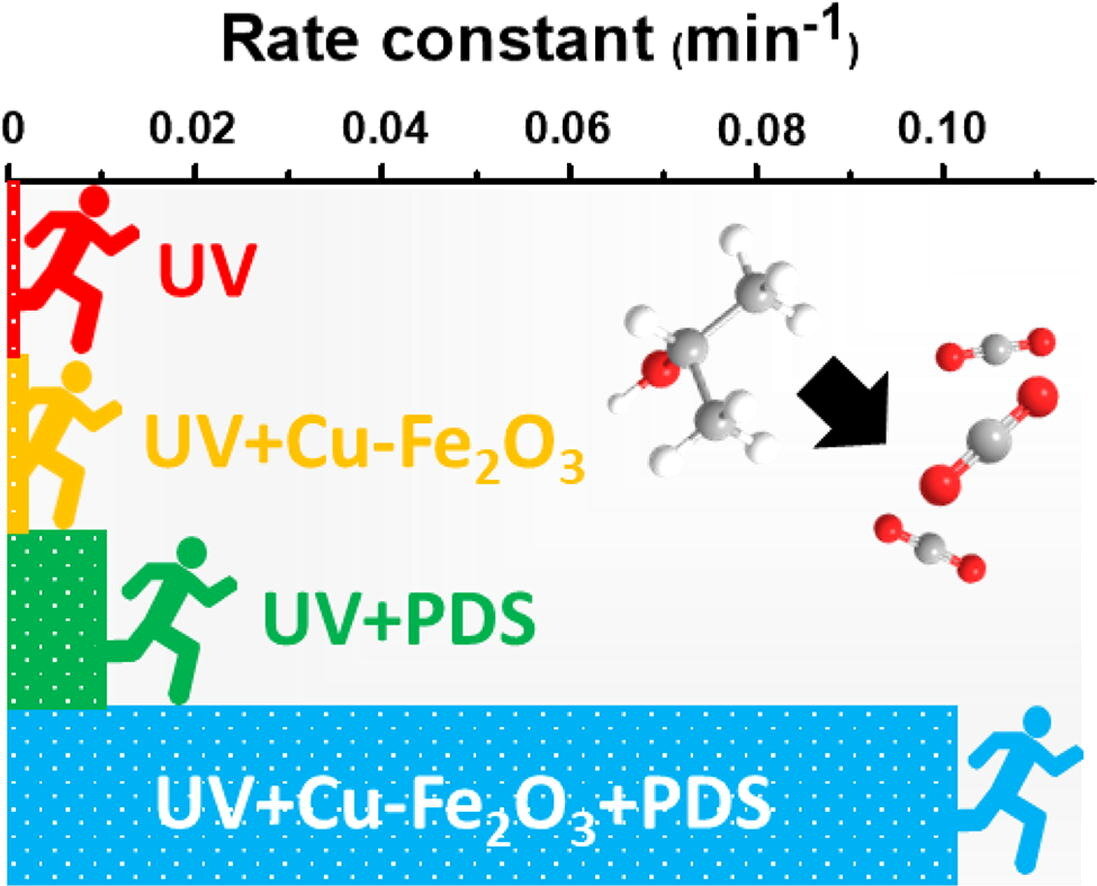Development of new technology for wastewater treatment for semiconductor production
Alcohols are used to remove impurities on the surface of semiconductors or electronics during the manufacturing process, and wastewater containing alcohols is treated using reverse osmosis, ozone, and biological decomposition. Although such methods can lower the alcohol concentration in wastewater, they are ineffective at completely decomposing alcohols in wastewater with a low alcohol concentration.
This is because alcohol is miscible in water, making it impossible to completely separate from alcohol using physical methods, while chemical or biological treatments are highly inefficient. For this reason, wastewater with a low alcohol concentration is primarily treated by diluting it with a large amount of clean water before its discharge.
A research team led by Dr. Sang Hoon Kim and Dr. Gun-hee Moon of Extreme Materials Research Center developed a photocatalyst that can completely decompose a trace amount of alcohol in water within a short duration by adding a very trace amount of copper to iron oxide, which is used as a catalyst during the advanced oxidation process.
The research team employed Fenton oxidation that uses oxidizing agents and catalysts during the advanced oxidation process for water treatment. Usually alcohols were used as reagents to verify radical production during Fenton oxidation in other advanced oxidation process (AOP) studies, they were the target for removal from semiconductor wastewater in this research.
This water treatment technology is expected to dramatically reduce the cost and water resources invested into the treatment of semiconductor wastewater. In the past, clean water with a volume 10 times higher than that of the wastewater under treatment was required for dilution of the wastewater in order to reduce the alcohol concentration of 10 ppm in the wastewater to less than 1 ppm.
If the photocatalyst developed by the KIST is used for water treatment, water resources can be saved. The research team applied the photocatalyst to wastewater from a semiconductor factory to prove that alcohol decomposition levels similar to those observed in the laboratory could be achieved in industrial practice.
“As large-scale semiconductor production lines are established, we expect that there will be a rapid increase in the demand for the treatment of semiconductor wastewater,” said Dr. Kim. “The results of our research will provide a solution to effectively treat semiconductor wastewater using less resources and at a lower cost,” he added.
The study is published in the Chemical Engineering Journal.
Thao Thi Le et al, Control of copper element in mesoporous iron oxide photocatalysts towards UV light-assisted superfast mineralization of isopropyl alcohol with peroxydisulfate, Chemical Engineering Journal (2022). DOI: 10.1016/j.cej.2022.139048
Provided by
National Research Council of Science & Technology
Citation:
Development of new technology for wastewater treatment for semiconductor production (2022, October 19)
retrieved 19 October 2022
from https://techxplore.com/news/2022-10-technology-wastewater-treatment-semiconductor-production.html
This document is subject to copyright. Apart from any fair dealing for the purpose of private study or research, no
part may be reproduced without the written permission. The content is provided for information purposes only.
For all the latest Technology News Click Here
For the latest news and updates, follow us on Google News.

